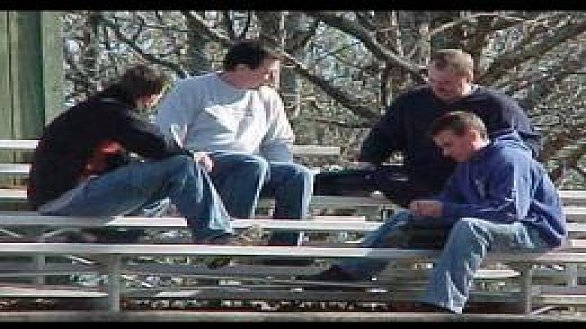Photo: A national study group finds the development of small groups is a key to building a vital congregation. UM Men have long been champions of such groups.
A UMNS article by Heather Hahn
Topical preaching, varied worship styles, effective lay leadership and small groups.
These are the things United Methodist congregations can do right now to become more vital and strengthen the denomination, say members of the Call to Action Steering Team.
The 16-member team, which includes clergy and laity, met Aug. 23-25 in Nashville, Tenn., to begin developing recommendations on how the church can become more effective in making disciples and reverse decades of declining U.S. membership.
The team based its discussions on the findings of two studies it commissioned from independent researchers. The reports, released in July, included an “Operational Assessment of the Connectional Church” and a “Congregational Vitality” overview.
Illinois Area Bishop Gregory V. Palmer, a team leader, said the group plans to present “robust recommendations” about the church’s operations to the denomination’s Council of Bishops and Connectional Table in November.
While the group irons out the details, team members stressed that data shows local churches can take certain steps without any action from the bishops or General Conference, the denomination’s top legislative body.
“We know that that there are vital congregations, and we know it’s possible to have more,” said Fred Miller, a consultant who has been guiding the team’s process. Miller is the president of The Chatham Group consulting firm and a member of First United Methodist Church in Chatham, Mass.
Churches of all sizes
For the “Vital Congregations Research Project,” the consulting firm Towers Watson measured vitality in terms of attendance, growth over five years, professions of faith per member and annual giving per attendee.
The firm analyzed data from 32,228 United Methodist churches in North America and classified 4,961 congregations, or 15 percent, as “high-vital”congregations.
While larger churches tended to be more vital than smaller churches, the firm found “high-vital” congregations in all sizes, in all ethnic groups, in every jurisdiction and in rural, urban and suburban settings. In addition, the firm found “high-vital” congregations that are theologically conservative and theologically liberal.
What these churches tend to share in common are what the study identified as 16 “drivers” of vitality that fall under the broad categories of pastoral effectiveness, worship, lay leadership and small groups.
Pastoral effectiveness
According to the study, effective pastors are those that develop, coach and mentor laity in leadership roles; influence the actions and behaviors of others to accomplish change; work with congregations to achieve significant goals and provide inspirational, topical preaching.
The research also showed pastoral tenure contributes to congregational vitality. Whether a pastor is effective is usually apparent by the third year. If a pastor is effective by then, this success is likely to grow over time with the highest level at 10 or more years.
Worship
Churches with contemporary and traditional worship services also tend to be more vital. The research found that traditional worship services should include topical preaching and contemporary worship services should be multi-media.
The study also found that contemporary services work best when the music echoes what people hear on pop radio. Such services can use traditional hymns, but they had better have a backbeat.
Lay leadership
Effective lay leadership is also key to vital congregations. The most vital churches had 25 percent to 50 percent of attendees in leadership during the last five years.
Churches also have rotating lay leadership with people sharing their gifts in a variety of ways over time. People do not serve year after year in the same position. Effective lay leaders also demonstrate vital personal faith. They participate in disciplines such as regular prayer and Bible study, attend weekly worship, give proportionally, join in mission opportunities and share their faith with others.
Small groups
Effective small groups can come in a variety of shapes, the research found. They include Bible studies, men’s groups as well as groups organized around missions or shared interests. Vital congregations also tend to have separate programs for children and youth.
Moving forward
Judy Benson, team member and lay leader of the Oklahoma Annual Conference, said she plans to incorporate the study’s findings on effective lay leadership at church leaders’ workshops.
“We’re going to do a big emphasis on how to help a person who wants to be a leader in a church be more creative,” she said. “And there’s no reason more churches can’t do the same thing.”
Team members said just getting the church to focus on these factors would be a significant step forward.
“The primary responsibility of everybody in all parts of our system — clergy, laity, general agencies, conferences — is to order our ministry around the drivers of vitality,” Miller said. “Because if we are a more vital church, we will make more disciples of Jesus Christ.”


